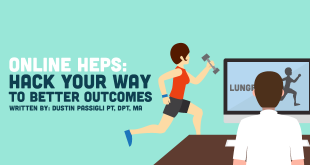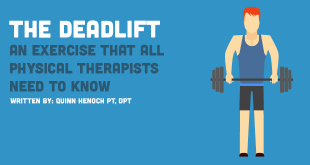Unfortunately, my time in New York City is coming to an end. I’ve spent over 8 years here and I’ve enjoyed the buzz, the people, the music, and the late night slices . However, I’m ready for a lower cost of living, a little less concrete, a little more nature, and a slower pace. So I’m moving to Asheville, North Carolina in January.
While I’m ready to leave NYC, I am very sad to be leaving my job at Dynamic Sports Physical Therapy This place has been my home for almost 5 years and I’ve grown incredibly as a clinician and as a person during my time there.
As I prepare to leave I can’t help but to look back at everything Jon Diamond and Pete Schultz (the owners) have taught me over the years. Besides all the advice on life, they have also given me a tremendous amount of mentorship and clinical advice. The most important clinical lessons that I’ve learned are below.
5 Clinical Lessons I Have Learned in My 5 Years at Dynamic Sports Physical Therapy
1. It’s more than theories, evidence, and techniques.
I love learning about the human species and movement. I go to a ton of classes and can’t stop digging deeper into the details of the human body. I spend a lot of time reading articles, books, and blogs. I would often come into work with tunnel vision, thinking the latest new theory or technique was going to solve all of my patients’ problems.
This was obviously not the case. Pete and Jon showed me that the science of the human species and physical medicine is only one part of the picture. Many of our patients are in pain, stressed, and spend 8+ hours sitting at a computer with an oppressive work load. Needless to say, most of them are in a full sympathetic, fight or flight state.
Sure, they need a serious approach to their physical health, but they don’t need it in a vacuum that encourages rumination. Creating an environment that is safe, consistent, and enjoyable can have more of a positive impact than anything my newfound technique will have.
Pete and Jon go out of their way to provide this experience at DSPT. They say hello to everyone that comes in (not just their own personal patients), accommodate any needs the patient may have, they keep it light, joke around with everyone in the clinic, and have enjoyable music/tv that changes based on patient preference. Most importantly, they develop a relationship with their patients that goes beyond healthcare. As a direct result, most of our patients want to come to the clinic, not just for the physical therapy, but for the atmosphere Pete and Jon have created.
2. Communication is everything
The more I practice, the more I realize how important communication is. You can have the best pain science and motor control knowledge, but if you can’t communicate them to your your patients, they’re worthless.
Working with Pete and Jon was interesting in that they both had very effective, but very different communication styles. I’ve tried to incorporate both of them into my practice.
Pete’s style is very comforting, non-threatening, and simple. A good example of this is when I watched him evaluate a shoulder during my first week at DSPT. The guy had poor thoracic mobility, scapular dyskinesis, no anterior core control, signs of impingement, and a possible rotator cuff pathology. At that point in my career I would have discussed those impairments with him in detail, but Pete just told him he had a shoulder strain and needed to get stronger. His treatment addressed all the impairments above, but he never scared him with pathoanatomy or dysfunctional mechanics. The patient was discharged within 4 weeks – pain free.
Watching the way Jon talks with patients is always a lesson in communication. He doesn’t overwhelm them with too much jargon, but doesn’t patronize them either. David Butler has talked about the importance of discrediting beliefs of danger and generating beliefs of safety. Jon does this not only with pain, but with everything. He covers a ton of ground (history, impairments, beliefs, feelings, education, knowledge, time line, options, etc) and then lays it out for them with a concise summary of what’s going on, their prognosis, what they need to do, and what he can do. He’s a lawyer, a teacher, and a salesman all at once. It’s impressive.
I try to utilize both communication styles based on the patient in front of me.
3. Keep what works
Together, Jon and Pete have over 30 years of experience and they take several courses a year. This adds up to a lot of techniques and theories. So which do they use?
They just use what works. They don’t listen to one approach like it’s a religion. They don’t spend any mental energy on what doesn’t work. They don’t force their favorite approach on every patient. They just use what works.
After taking a course or reading an article/book you should give the technique(s) a test run for a couple weeks. After that, you’ll know which ones work and which ones don’t. You incorporate the useful ones into your practice and discard the ones that don’t work. Don’t feel bad about not incorporating everything and not being a true “_____” therapist. Again, it’s about the patient, not the therapist.
If you use this method, you’ll develop an eclectic approach, and develop many different skills for improving pain, movement, and health. And with an eclectic approach, you’ll be better able to flex the treatment to better fit the patient.
4. Manual is overrated; exercise is underrated
Early in my career, I was fascinated by new manual techniques and thought this was the key to helping patients. But after working in a 45 minute one-on-one clinic I quickly learned manual therapy is very over-rated. Within my first year I realized that most of my failed patients were the ones that received mostly manual therapy.
This was also confirmed by observing Pete, who is probably the best manual therapist in the city. Over the years he’s shown me many effective manual techniques and how to perform them, but when I watch him treat he only spends 10-15 minutes with his hands on the patient.
More manual time doesn’t mean it will be more effective. If anything, it makes the patients dependent and less motivated to take an active approach in their rehab.
5. “Give them what they need, packaged as what they want” -Peter Schultz
This is one of the best lessons in both business and patient care.
After taking the SFMA I started to become more aware of distal influences and the power of improving movement with patterns. However, this was often a contrast to strong beliefs held by the patient about what they thought they needed, such as ultrasound as miracle cure. I needed to keep the customer happy, but I couldn’t sacrifice the quality of care.
That’s when the quote above came from Pete. Give them the 3 minutes of ultrasound or the quick soft tissue work to the local area that they want, but in a package that involved addressing the root cause and movement patterns. Adding a non-effective exercise, modality, or manual technique isn’t going to kill the person. If it’s what they want and it’s not going to hurt them, then why not? Sacrificing 5 minutes of your treatment isn’t going to ruin the plan of care. If anything, it may just cause a placebo effect and improve your rapport.
Another method for maintaining customer satisfaction is altering your language to better “sell” the treatment. Now don’t get me wrong. I’m not saying you should lie to them. I’m just saying you should try putting it in their perspective (which is necessary for compliance). Just explain the breathing exercise as a thoracic mobility drill, call the 90-90 hip lift a hamstring isometric exercise, use the single leg deadlift as a “dynamic ankle drill”, call the ½ kneeling motor control drill a core exercise. Do what needs to be done, but be sure to communicate what they want to hear. This is exercise salesmanship 101.
Summary
Going to courses, reading articles and blogs, and writing have definitely helped my professional development. But research articles, theories, and certifications only take you so far. What has made the biggest impact is having two experienced and friendly clinicians mentor me on how to really get patients better.
Isaac Newton said it best,
“If I have seen further than others, it is by standing upon the shoulders of giants.”
 NewGradPhysicalTherapy.com The Largest Online Resource For New Grad Physical Therapists
NewGradPhysicalTherapy.com The Largest Online Resource For New Grad Physical Therapists


